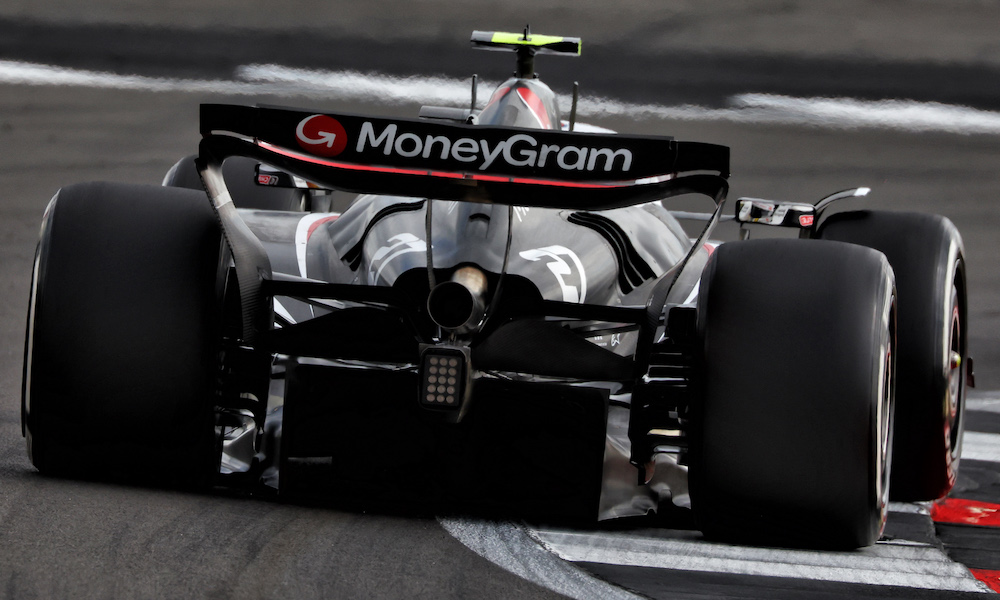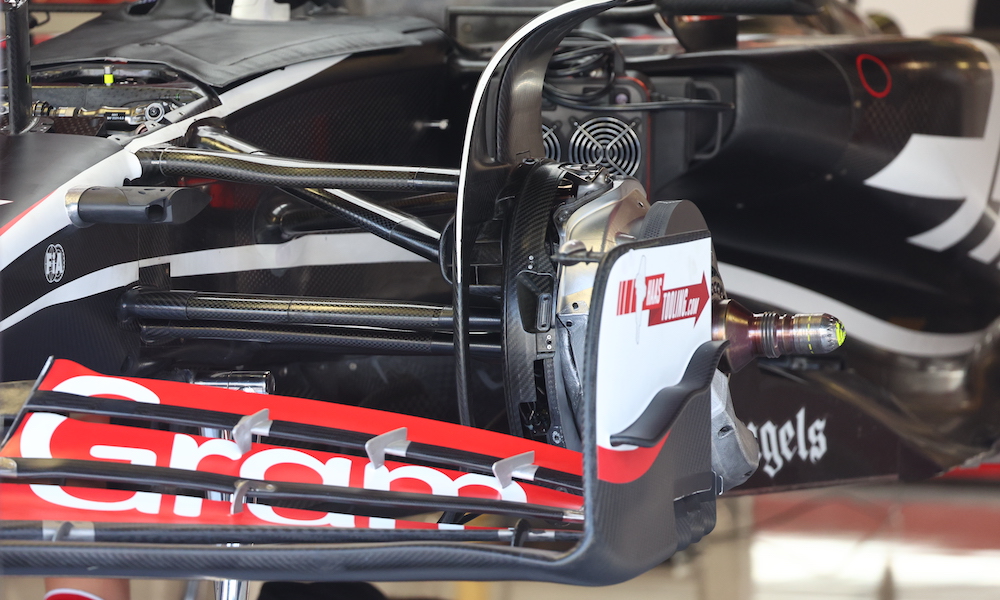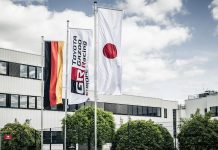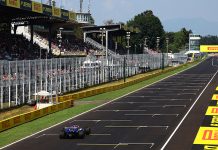Haas is targeting a further Formula 1 upgrade package for the VF-24 at the United States Grand Prix in Austin, echoing the timing of its biggest update last season.
While the development is set to inform the engineering direction for next year’s car, it is unlikely to be the same kind of upgrade as in 2023, when the American-owned team radically changed its concept to an outwash aerodynamic solution. Haas picked up the wooden spoon in last season’s standings; its change of direction for round 19 at Austin arguably came too late to have a substantial impact on its campaign.
One of the priorities for new team principal, Ayao Komatsu, when he replaced Guenther Steiner at the start of this year was to bring more upgrades to the track sooner. The idea behind this approach was to give Haas a better chance at keeping pace with its rivals in the bottom half of the table.
‘I would say that’s something we still need to work quite hard on,’ Komatsu said at pre-season testing, referring to Haas’ pace of producing new parts. ‘I don’t think our lead time is one of the best in the field.’
A quicker rate of progress for the team, which spreads its operations between Banbury in the United Kingdom and Maranello in Italy, was achieved this season. It rolled out a suite of five performance-related updates to round five in China. That was topped up with front and rear end changes for Imola, before another comprehensive package arrived in time for round 12 at Silverstone.
‘After [Monza], you have Baku and Singapore,’ said Komatsu. ‘It doesn’t make sense to bring a package to them, and after that, it’s Austin. That coincides pretty well with the shutdown as well. After we’ve finalised the Austin package, we are free [to focus on] 2025.’
When asked what Haas’ priorities are for the Austin package, Komatsu pointed towards the team’s most recent major technical change for the British GP in July.
There, Haas introduced seven performance-related adjustments, including a new floor designed to increase the ground effect suction that keeps the car planted through corners. The sidepod inlet was given a longer upper lip to facilitate cleaner airflow to the rear, which in turn required the sidepod to protrude further rearward. During the Silverstone race, Nico Hülkenberg finished sixth to equal Haas’ best result of the season, matching his position at the previous round in Austria.
‘It’s similar to Silverstone,’ said Komatsu of the planned Austin upgrade. ‘We worked on the floor and bodywork and found performance. Those assumptions of what we expected in the wind tunnel [and] CFD [testing] that materialised at Silverstone… [it will be] continuation of that, and a couple of other areas which we find interesting. That is the next stage.’

One of the problem areas for Haas this year has been speed through medium-speed corners, although Komatsu pointed out that certain slow-speed corners can also be a thorn in its side when certain variables are at play.
The team is yet to find out what is causing its lack of pace through the medium-speed turns.
‘We clearly improved high-speed,’ said Komatsu. ‘There are some parts of the car that suggest why high-speed correlation wasn’t great before. We improved [that, however] medium is still poor. I personally don’t have an explanation. In low speed, we are at least competitive. But you can look at Zandvoort: [at] Turn 9 and Turn 10, everybody was complaining because of the wind and track surface. But I think we suffered more compared to the others.
‘So, it’s not just in medium-speed corners where we are poor. In certain slow-speed corners, with certain characteristics, we are poor as well. There are many areas that we need to understand. I don’t pretend to understand everything. But we are working on that.’
It doesn’t necessarily bode well for the next two races on the streets of Baku and Singapore, where there are several 90-degree corners to contend with. However, Haas is hoping that the Austin upgrades can put it in a better position for the run-in. It currently sits seventh in the championship standings on 27 points, seven behind RB.
Regarding this weekend’s Italian GP, held at the fast Monza track, Komatsu suggested that Haas has a better chance than in previous years considering its increased focus on low-downforce capabilities for the VF-24. On last year’s visit to Monza, Nico Hülkenberg and Kevin Magnussen finished one lap down in 17th and 18th.
‘It’s very difficult to predict how competitive or uncompetitive you are going to be at each event,’ Komatsu acknowledged. ‘At Spa, I didn’t think we were going to be that uncompetitive [finishing 14th and 18th]. At Zandvoort, we clearly underperformed in qualifying and didn’t get much out of the car.
‘Here [at a] low-downforce track… it’s always [been] a bit difficult because we never had a competitive low-downforce package. This year we have a reasonable low-downforce package, but the new [track] surfaces and changes to the kerbs, how we get on top of it, is a big unknown.
‘I still think we can fight close to the points; that’s always our target. But it’s very difficult to predict accurately.’






